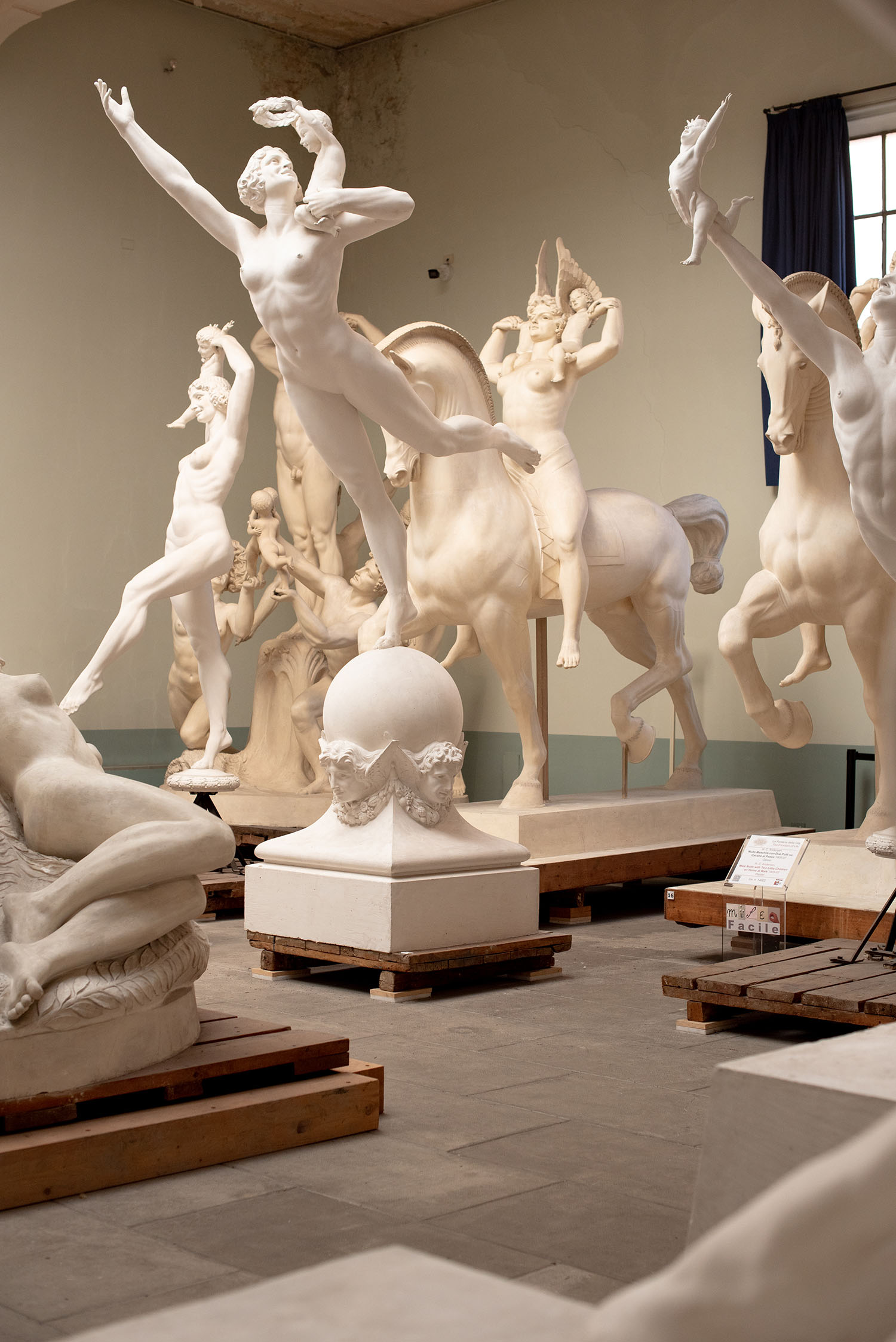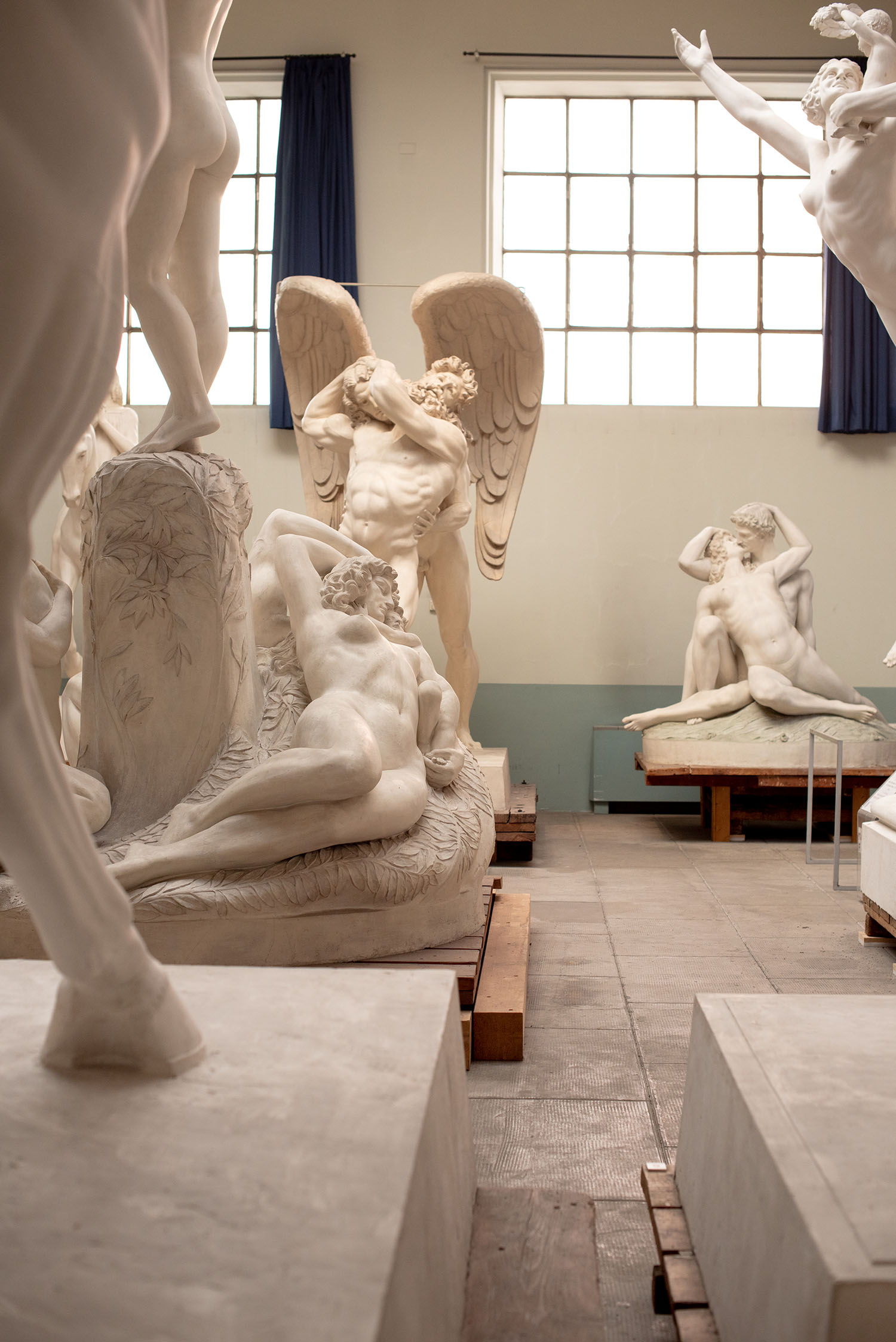

Today, much of his sculpture work, along with his papers and the contents of his studio, live in the building that was once his home in Rome. (Much like Rodin, he bequeathed that home, along with his studio, papers and over 400 pieces of his work to the state in his will.) It is the Museo Hendrik Christian Andersen. Entry is free of charge.
The museum is itself a masterpiece. Sculptures are displayed on palettes, in very close quarters, in a way that lends the space an air of breathtaking visual chaos. The marble works are so large, placed so near each other; visitors so small, so insignificant by comparison walking among them. The effect of this presentation is precisely the opposite of what Andersen would surely have aspired to. He worked with the goal of designing an ideal, “World City,” in mind. In his estimation, large, classically-inspired art stirred viewers towards a desire for self-improvement. In reality, as Henry James told Andersen in an exasperated letter, “The World is a prodigious & portentous & immeasurable affair. It is so far vaster in its appalling complexity than you or me.” The museum dedicated to Andersen’s work presents a visual demonstration of the accuracy of those statements, and reveals, discreetly, Andersen’s own tendency towards romantic over-simplification.
It does so without judgement or malice. The museum is old, and a bit rundown, but lovingly curated. Away from more notable tourist attractions, it offers a quiet reprieve within the busy, often noisy, city. You can stay as long as you like. It’s unlikely you’ll meet many other visitors while you’re there. While the museum has garnered a bit of attention on Instagram in recent years, it remains largely off the radar. Most visitors are Italian nationals. (Information at the museum is available in Italian and English, but most staff speak only Italian. It’s best not to arrive with a lot of questions, unless you understand Italian well.) The calm atmosphere allows more space to truly appreciate the art on display. But it’s the art that makes the museum worth visiting.
Sculpture galleries and museums are among my favourites to visit. And the Museo Hendrik Christian Andersen is the most unique that I’ve encountered in my travels. Utterly photogenic, perfectly serene and completely unexpected, it makes a beautiful addition to any Roman holiday itinerary.
Museo Hendrik Christian Andersen
Via Pasquale Stanislao Mancini, 20
39 06 321 9089
Happy weekend, Cee!! Already spent some time organizing our summer galavants + currently inspecting the Louis Vuitton website before all of Martin’s bday fun begins. Haha! And wow, this museum is absolutely breathtaking. I can only imagine how wonderful it must be to walk through in person!! Definitely on the Cee & V list of things to do!! x